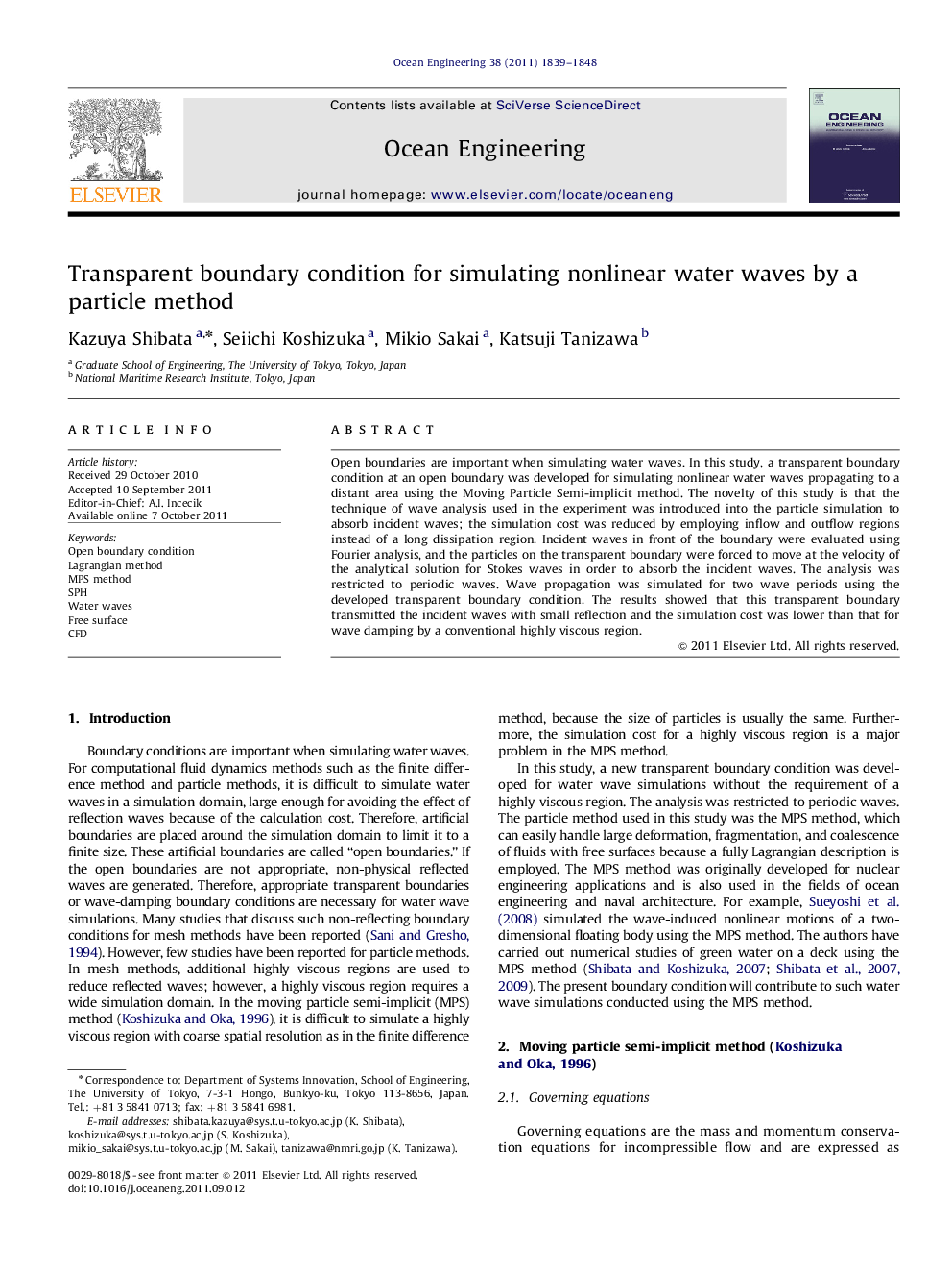| کد مقاله | کد نشریه | سال انتشار | مقاله انگلیسی | نسخه تمام متن |
|---|---|---|---|---|
| 1726417 | 1015112 | 2011 | 10 صفحه PDF | دانلود رایگان |

Open boundaries are important when simulating water waves. In this study, a transparent boundary condition at an open boundary was developed for simulating nonlinear water waves propagating to a distant area using the Moving Particle Semi-implicit method. The novelty of this study is that the technique of wave analysis used in the experiment was introduced into the particle simulation to absorb incident waves; the simulation cost was reduced by employing inflow and outflow regions instead of a long dissipation region. Incident waves in front of the boundary were evaluated using Fourier analysis, and the particles on the transparent boundary were forced to move at the velocity of the analytical solution for Stokes waves in order to absorb the incident waves. The analysis was restricted to periodic waves. Wave propagation was simulated for two wave periods using the developed transparent boundary condition. The results showed that this transparent boundary transmitted the incident waves with small reflection and the simulation cost was lower than that for wave damping by a conventional highly viscous region.
► A transparent boundary condition at an open boundary was developed for simulating water waves.
► Techniques of wave analysis were introduced into the particle simulation to absorb incident waves.
► Wave propagations were simulated for two wave periods.
► The results showed that this boundary transmitted the incident waves with small reflection.
► Simulation cost was lower than that for wave damping by a traditional highly viscous region.
Journal: Ocean Engineering - Volume 38, Issue 16, November 2011, Pages 1839–1848